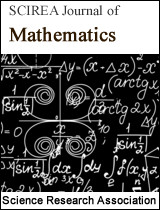Residents’ Consumption Structure and Regional Differences in the Perspective of Internet
DOI: 278 Downloads 16240 Views
Author(s)
Abstract
To find out the impact of Internet on Residents’ Consumption Structure and Regional Differences, panel data analysis and experimental study were used to analyze China’s provincial panel data from 2003 to 2016. The results show that from the overall level of the country, the Internet development plays a significant role in promoting the residents’ consumption in China. At the same time, the Internet development can promote Chinese residents’ consumption structure from the type of survival consumption to the type of enjoyment and finally to the type of developmental consumption. From the perspective of regional differences, the influence of Internet development on the residents’ consumption in the eastern region is greater than that in the central and western regions. It turned out that the consumption potential of Internet development in the Midwest of China is very huge.
Keywords
Internet Influence, Residents’ consumption, Regional Differences, Consumption Structure
Cite this paper
Guanghai Tang, Ruili Chu,
Residents’ Consumption Structure and Regional Differences in the Perspective of Internet
, SCIREA Journal of Mathematics.
Volume 4, Issue 1, February 2019 | PP. 5-25.
References
| [ 1 ] | Du Danqing.(2017)“Research on the dynamic mechanism of Internet boosting consumption upgrade”, Economist, (03), pp.48-54. |
| [ 2 ] | Hu Ridong, Qian Minghui, Zheng Yongbing. (2014) “The Impact of Urban-Rural Income Gap on Consumption Structure of Urban and Rural Residents——An Empirical Analysis Based on LD/AIDS Expansion Model”, Finance and Economics Research, (5), pp. 75-87. |
| [ 3 ] | Keynes J M.(1936) “General Theory of Employment, Interest and Money”, The American Economics Review,6 (3), pp. 490-493. |
| [ 4 ] | Lei Yiyu, Gong Liutang. (2014) “The Influence of Urbanization on Household Consumption Rate: Theoretical Model and Empirical Analysis”, Economic Research, 49(06), pp, 44-57. |
| [ 5 ] | Li Tao, Chen Binkai. (2014) “Family Fixed Assets, Wealth Effect and Household Consumption: Empirical Evidence from Chinese Urban Households”, Economic Research, 49(03), pp, 62-75. |
| [ 6 ] | Liu Hu, Zhang Jiaping. (2016) “Is the Internet a new engine for expanding residents’ consumption?——An empirical analysis from urban panel data”, Consumer Economy, 32(02), pp,17-22. |
| [ 7 ] | Liu Hu, Zhang Jiaping. (2016) “The Influence of Internet on the Consumption Structure of Rural Residents and Regional Differences”. Finance and Economics, (04), pp, 80-88. |
| [ 8 ] | Shi Zuhui. (1997) “The Impact of Employment on Consumption——An Empirical Analysis of the Relationship between Employment Rate and Consumption Growth in Shanghai”, Statistics & Decision,(10), pp, 32-33. |
| [ 9 ] | Wang Wei. (2016) “The Effect and Mechanism of Internet +Promoting China’s Consumption Upgrade” , Journal of Finance and Economics, (12), pp, 94-102. |
| [ 10 ] | Wang Yuxu. (2015) “Research on the Influence of Population Aging on the Consumption Gap of Urban and Rural Residents in China——An Empirical Analysis Based on Provincial Dynamic Panel Data”, Contemporary Economic Science, 37(05), pp,109-115+128. |
| [ 11 ] | Yang Jirui, Xue Xiao, Wang Rui. (2015 ) “Reflections on the Transformation of Consumption Mode under the Background of Internet +”, Consumer Economy, 31(06), pp, 3-7. |

